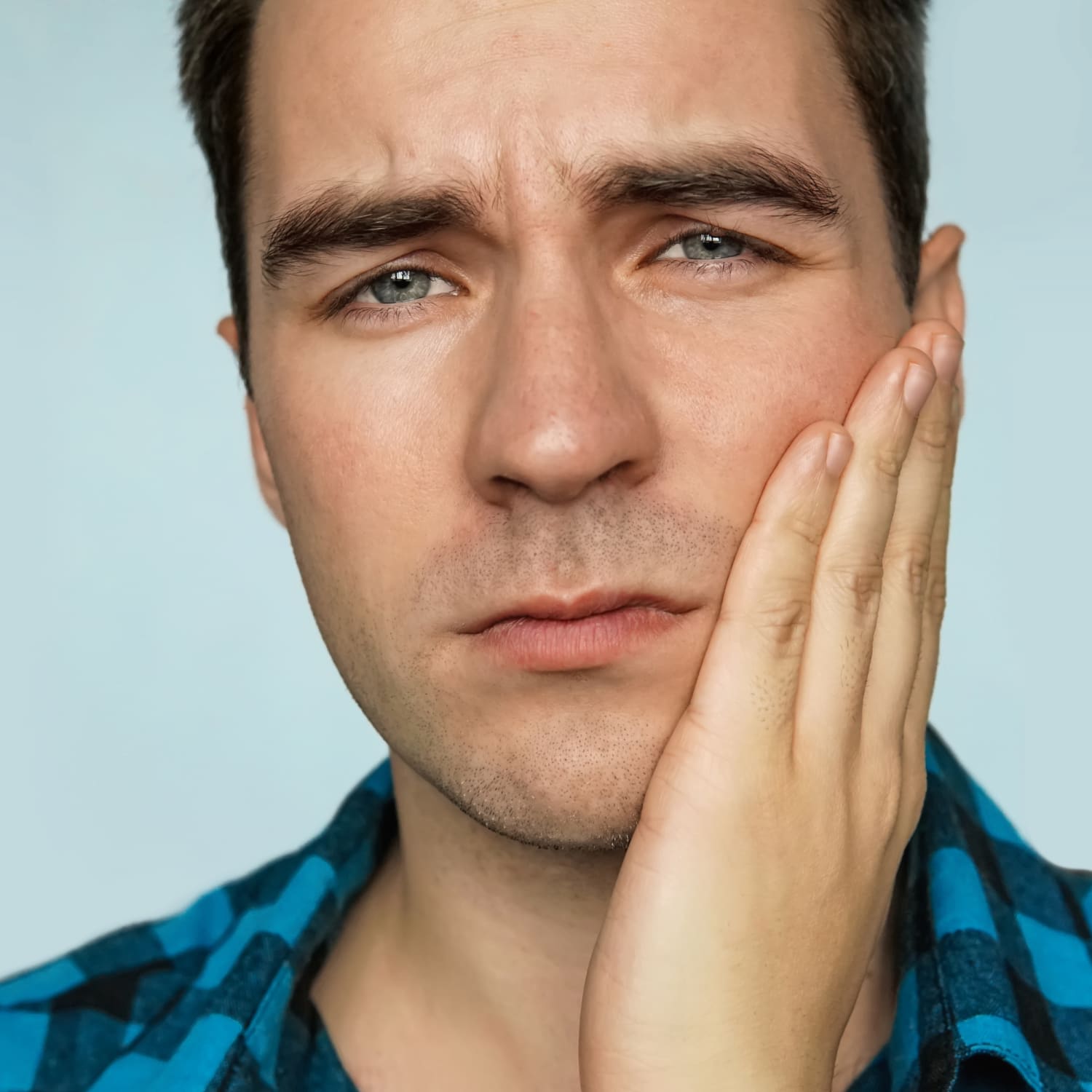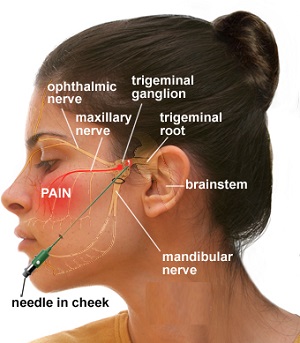TRIGEMINAL NEURALGIA : causes , symptoms , treatments
TRIGEMINAL NEURALGIA
Trigeminal neuralgia , also known as tic douloureux , is sometimes described as the most excruciating pain known to humanity . the pain typically involves the lower face and jaw , although sometimes it affect the area around the nose and above the eye .
The pain can be triggered by an action as routine and minor as brushing your teeth , eating or the wind . Attacks may begin mild and short , but if left untreated , trigeminal neuralgia can progressively worsen . Although trigeminal neuralgia cannot always be cured there are treatments available to alleviate the debilitating pain . Surgery can be effective option for those who become unresponsive to medication or for those who suffer serious side effects from the medications .
Trigeminal derives from the Latin word " tria, "means three , and " geminus " means twins . after the trigeminal nerve leaves the brain and travels inside the skull, it divides into three small branches , controlling sensations throughout the face .
1. OPHTHAMIC NERVE - The first branch controls sensation in a person's eye, upper eyelid and forehead .
2. MAXILLARY NERVE - The second branch controls sensation in the lower eyelid, cheek, nostril , upper lip and upper gum .
3. MANDIBULAR NERVE - The third branch controls sensations in the jaw, lower lip, lower gum and some of muscles used for chewing .
CAUSES OF TRIGEMINAL NEURALGIA
There are 2 types of TN - primary and secondary . the exact cause of TN is still unknown , but the pain associated with it represents an irritation of the nerve. Primary trigeminal neuralgia has been linked to the compressions of the nerve, typically in the base of the head where the brain meets the spinal cord . this is usually due to contact between a healthy artery or veins and the trigeminal nerve at the base of the brain . this places pressure on the nerves as it enters the brain and causes the nerve to misfire. secondary TN is caused by pressure on the nerve from a tumor , MS , a cyst , facial injury or another medical condition that damages the myelin sheaths .
SYMPTOMS OF TRIGEMINAL NEURALGIA
Most patients report that their pain begins spontaneously and seemingly out of nowhere . In the cases of dental works , it is more likely that the disorder was already developing and then caused the initial symptoms to be triggered. pain often is first experienced along the upper or lower jaw , so many patients assume they have a dental abscess . some patients see their dentists and actually have a root canal performed , which inevitably brings no relief. When the pain persists , patients realize the problem is not dental related .
Pain can be focused in one spot or it can spread through out the face . typically , it is only on one side of the face , however , in rare occasions and sometimes when associated with multiple sclerosis , patients may feel pain in both sides on their face . Pain areas include the cheeks , jaw , teeth , gums , lips , eyes and forehead .
Attacks of TN may be triggered by the following :
- touching the skin lightly
- washing
- shaving
- brushing teeth
- blowing the nose
- drinking hot or cold beverages
- encountering a light breeze
- applying makeup
- smiling
- talking



:max_bytes(150000):strip_icc():format(webp)/trigeminal-neuralgia-and-multiple-sclerosis-2440818_v2-012-b53eaece54614136a4b07402e640acd9.png)
Comments
Post a Comment